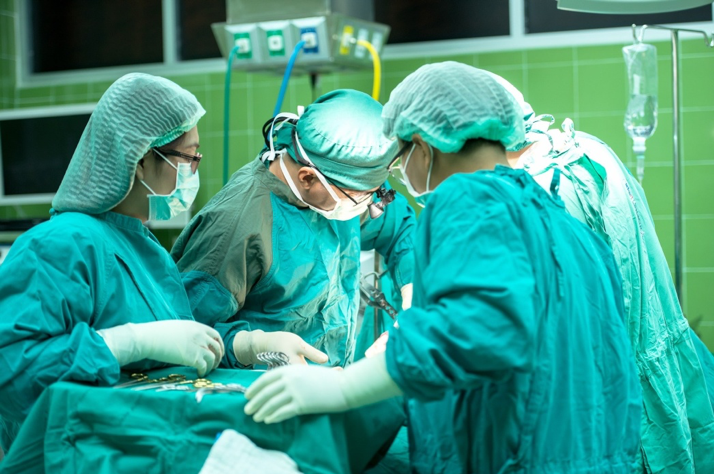There are a few main types of vascular surgery, each for a different venous condition. Are you wondering whether or not you should get vascular for your venous disorders and medical health issues? Is venous blockage taking a toll on your overall health? You should know that many types of vascular surgeries are performed in the healthcare industry today. With recent developments in technology and the widespread use of newer and more innovative ways to treat cosmetic issues, vascular surgeries have been on the rise. But, what types of vascular surgeries are there?

Surely, knowing the answer to that can help you be proactive in getting the required medical attention. So, let’s dive into the details of some of the main vascular surgeries that only experienced professionals can provide.
Types of Vascular Surgeries
Depending on your medical condition and what issues you have faced in the past, your surgeon can recommend a suitable vascular surgery. Here’re the different vascular surgeries available for common types of vascular diseases and disorders:
Endovenous Ablation
If you don’t know what varicose veins are, they’re bulging and twisted veins that appear behind the legs at the calves and thighs. They’re usually bluish-green or purplish and can be found at nearly any part of the body where there’re clusters of veins. Endovenous ablation is a vascular surgery that deals with the closure of varicose veins around the body. The procedure takes place in the vein, as a professional surgeon uses high temperatures to damage the varicose veins and close them off.
However, the procedure isn’t as uncomfortable as it sounds. The surgeon will insert a fine needle into the bulging vein and transfer energy through a tiny tube catheter to damage the vein, so scar tissues form. Hence, the vein will close on its own shortly.
Ambulatory Phlebectomy
In simple words, this procedure helps with venous issues such as spider and varicose veins. It’s an outpatient procedure that’s usually not so complicated when done by an experienced professional. This type of vascular surgery involves small slit-like incisions at the varicose or spider vein sites. A professional surgeon performs ambulatory Phlebectomy to remove a large varicose vein for cosmetic reasons. However, one treatment appointment is usually sufficient as it may involve eliminating the largest varicose vein in the body.
But depending on your medical health status and whether you have underlying health issues, you may require multiple visits to the surgeon’s office. Don’t forget that this uncomplicated procedure isn’t so difficult to take on or endure. It usually involves the use of a numbing agent on the incision site and anesthesia to put you to sleep or make you unconscious. Your professional surgeon will conduct a comprehensive health evaluation before starting the procedure.
VeinGogh
If you’re wondering what’s minimally-invasive vascular surgery is most common, the answer is the VeinGogh treatment. It utilizes a microburst technology that is extremely effective in dealing with discolored and bulging veins on the legs and other parts of the body. It’s a safe vein treatment that utilizes the said technology to help patients get rid of the unpleasant appearance of veins on different parts of the body. Since the technology is more advanced, it is suitable to eliminate the appearance of veins on sensitive areas of the body as well.
With a simple injection to the targeted area, your professional surgeon will insert a fine hair-like fiber stylus to treat the problematic veins. The stylus won’t go inside the vein itself, but will be assisted by microburst technology. It uses a microburst heat technology to damage the vein, so the vein walls collapse and seal shut.
Scar tissue will form and will be absorbed by the body. Afterward, the blood from the problematic veins automatically diverts towards other healthier blood capillaries.
Click here to learn more about the VeinGogh treatment.
Sclerotherapy
This is a highly simple and minimally-invasive type of vascular surgery that professional surgeons use to seal off damaged and problematic veins. Using an injection, the surgeon delivers a solution into the lymph vessels. The solution contains an effective chemical agent that causes the vessels to shrink. It’s a non-surgical procedure and usually takes only a couple of hours at most. The solution inside the injection is the sclerosant. It irritates the vessel walls and causes them to swell. The swelling stops the blood flow and causes problematic veins to shrink and close off.
Potential Candidates of Vascular Surgeries (with Risk Factors)
Vascular diseases are more prevalent in people with risk factors. This means that as you age, you’re more likely to develop certain vascular diseases and disorders due to a few risk factors. Hence, it increases the likelihood of you needing vascular surgery. Check out some of those risk factors so you can get the required medical attention on time:
- Smoking
- Pregnancy
- Aging
- Hereditary/Genetic issues
- Family history
- Obesity
- Diabetes
- Hypertension
- Prolonged inactivity periods
- Injuries
Types of Vascular Surgeries: Conclusion
Find out what kind of vascular surgeries you can get at our Vascular Surgery and Vein Center where Dr. Norman Chideckel provides professional consultation on vascular and vein related conditions. We are among the most experienced vascular disease treatment centers in New York. Dr. Chideckel has spent many years performing many types of vascular surgeries on patients.
Schedule a consultation with Dr. Norman Chideckel today.
Vascular Surgery & Vein Center
108 East 96th Street
Front 1
New York, NY 10128
212-993-6133

